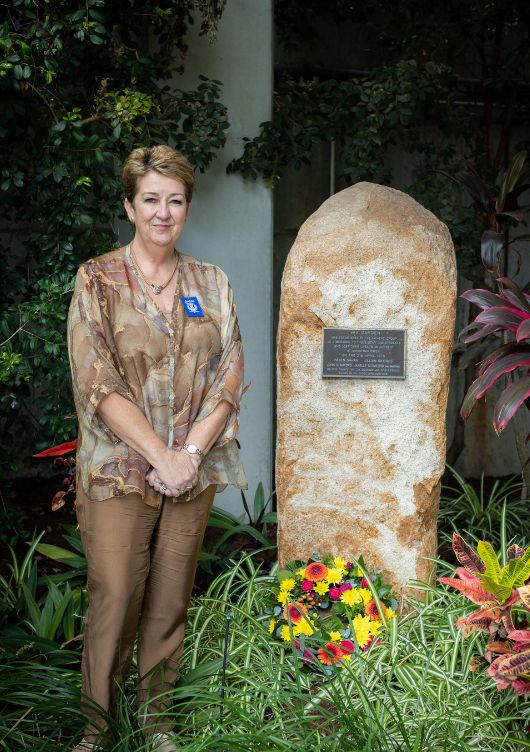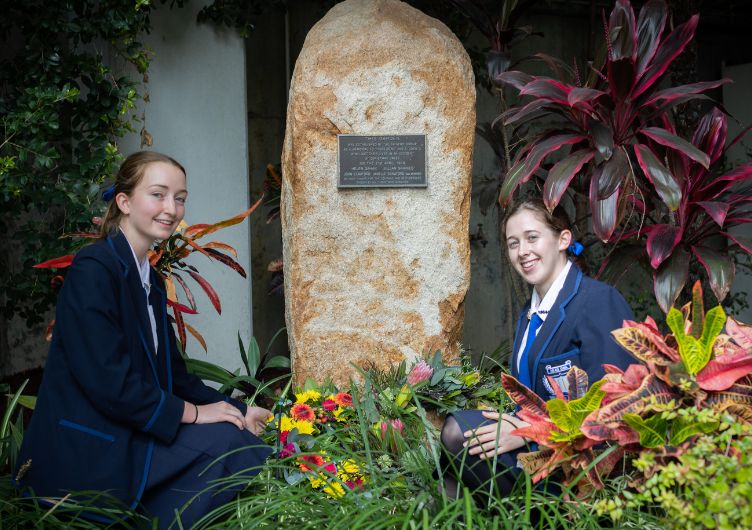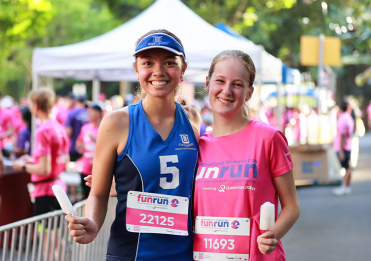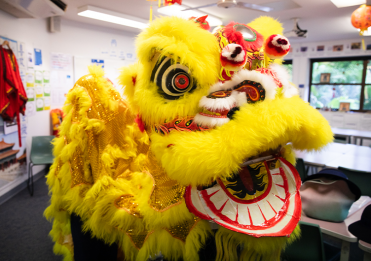How are you shaped? Is it through events, emotions, family? Moments in life can most certainly shape you. Some call it fate, luck, bad luck, God’s will, or destiny, to name a few. These words are often used for moments when we try to grapple with a situation that is completely unexpected.
It is fair to say that I loved attending BGGS. I felt very privileged to be in a safe sanctuary where I was encouraged to thrive. I made the most of every opportunity. Would I do it all again? Absolutely. You will never again be in this place of learning and life preparation. The world and its associated reality can seem so very far away.
When I was a student here in 1979, I was in Year 10. I played many sports, embraced leadership, and basically lived a very happy life. I had, and still do have, a very loving family who supported me and encouraged me. My Science teacher, Mr Stamford, had just started a new club at School. I remember it being the Outdoor Club. Heaven only knows why I even joined it. Camping wasn’t my thing, but I admired Mr Stamford and some of my friends joined along with me. Our first experience was to camp by Christmas Creek and then hike to an historic site. I signed up straight away. Some of my friends did also, but some declined so they could study for a test the following week.
We set off in a mini bus after the School’s official Easter service. There were 19 girls from Years 10 to 12, along with Mr Stamford, his wife, another teacher, Mrs Johnstone, and her husband. The Stamford’s and Johnstone’s were good friends.
We stopped at KFC in Beaudesert for dinner, then headed on to a private property near Christmas Creek where we set up camp. The next morning, it was freezing. We huddled around the fire and cooked breakfast. I have a photo in my study that Mr Johnstone took on that morning. It is of me looking very sombre, sitting stoking the fire. Looking at this photo, I see the ‘me’ both before and after what happened later that day. I see a 14-year-old whose life was never the same.
After breakfast, we set out to where we would begin the hike. Mr Stamford drove the mini bus along a dirt road that was cut out from the side of the mountain. He had been told by the property owner that there had been some rain and that the edge was soft, but still suitable for vehicles. I don’t remember how far we had travelled before the back wheel left the track and the bus started rolling down the hill. I, unfortunately, didn’t lose consciousness. I remember total blackness.
I would later learn that as the bus rolled, all but three of us were thrown out onto the grass via either the front or back windows. There were no seatbelts at this time. There was no reason as to who ended up where. There still is no answer as to why Mr Stamford, his wife, and two of my friends did not survive when others did. I have realised with time that you can’t dwell on ‘what if’. You can only deal with ‘what is’. For me, I had travelled down to the bottom. I was comforted by Mr Johnstone and reassured by those few who were able to move around. One student and Mrs Johnstone, both of whom were relatively uninjured, ran back to the property owner to sound the alarm.
There were no mobile phones and very limited radio coverage in the area. At this point, no one realised the gravity of the situation. People from all walks of life came to help; people who were out driving for the day, nearby residents, and the family who lived on the property. They started at the top of the hill and moved their way down. Because of this, I was one of the last to leave the site. By then, it was mid-afternoon. I remember being carried up the hill on a stretcher to a waiting truck with an open back tray. I remember being scared as I was put on the truck as I feared we would roll down again.
I was taken to Beaudesert Hospital to be stabilised, then put in an ambulance, with a police motorcycle escort, to the Mater Hospital in Brisbane. The PA Hospital and Mater had both been warned that multiple casualties were arriving. Upon arrival, I remember calling out to other girls in the room. I still really had no concept of the extent of my injuries. I clearly remember seeing my parent’s faces as they rushed towards me. As a mother now myself, I cannot imagine how absolutely traumatic that was for them to see me this way. I was in surgery for some time, before staying in intensive care for several days.
My mother recalls a moment in intensive care when she and my father saw X-rays of my head with two circles on them. Thinking the worst, they anxiously asked the doctors what the circles represented. They were told I had begged the nurses and doctors to leave my sleeper earrings in as I had just got my ears pierced and didn’t want to go through the pain again. Through all that had happened, I was still thinking as a 14-year-old girl!
There were two Sunday papers at the time. Both had the story on the front pages. For the Grammar community, this was the first time most people learned of what had happened the day before. Remember, no social media platforms at this time.
When I joined the other girls in the open ward, it was good to see them, but also the reality of the situation began to sink in as I had been sedated up until then. Every afternoon at 3.30 pm, a sea of blue and white descended on the hospital. The hospital staff could barely cope. This was the Grammar sisterhood in full view; something that still resonates today. I would later learn that the whole School community was struggling to cope. A staff was mourning the loss of a colleague and students; girls, the loss of their favourite teacher and friends. My friends who had made the decision to stay home and study faced the reality of how close they had been to being involved. There was just one guidance counsellor. For you today, in a world where there is a plethora of services on hand, you may find it incredulous that there was not a sea of professionals on hand to counsel all involved. You see, nothing like this had happened before. In today’s world, there would be a different response.
The School community did the best they could and we all got on with life as best as we could. That’s how things were handled back then. However, it wasn’t just the School community. Two little girls had lost their parents and two families had lost their precious daughters. Every person involved was in some way affected. Even in 2023, two people have contacted the School to share their stories and ask what happened to the students. One was a doctor from Beaudesert hospital who was there as a young intern. Another man has come forward who was a young boy living at the property where we camped. He told of how his family never really recovered from what they faced that day.
So how has this moment, this decision I made to attend the weekend away, changed my life? How has it shaped me? I would be lying if I said I don’t think about it much. The reality is, it never leaves me. Memories of that day and the months afterwards revisit me on a regular basis. I feel an unfathomable sense of gratitude. How can I say thank you enough to so many people, some of whom I have never faced since that day?
I cannot change what happened. What I do have control over is how I use this event to remind me. I am reminded that life is precious. I am reminded that I have been truly blessed to be here talking to you today. I am reminded and grateful for the many arms around me showing support and care. I am reminded that you still need to follow your passions, even if the outcome is confronting.
Talking to you today is part of my healing process, still active after 44 years. I am passionate that this event remains an important historical moment to be remembered; to acknowledge those who lost their lives, those who survived, and all those involved with the School at that time. It reminds me that resilience can thrive, even when you are at your lowest point. This event shaped our School community in a lasting way. Every time you arrive at Marrapatta, remember why this place was first established. It was to recognise the passion of Mr Stamford for outdoor education. The Board of Trustees saw it as vital that on behalf of the School community, they honoured the vision of providing girls with a sense of adventure and challenges. It isn’t just a beautiful place, it’s a place that has been established specifically as a memorial campus.
When you walk past the memorial stone here on campus, I hope you see more than just a physical object. You may see flowers there from time to time. They will have been placed by people who will never forget, still supporting one another, and acknowledging the bravery of so many. I hope you may reflect on those who came together as a community to move forward in the face of great tragedy. Thank you.






